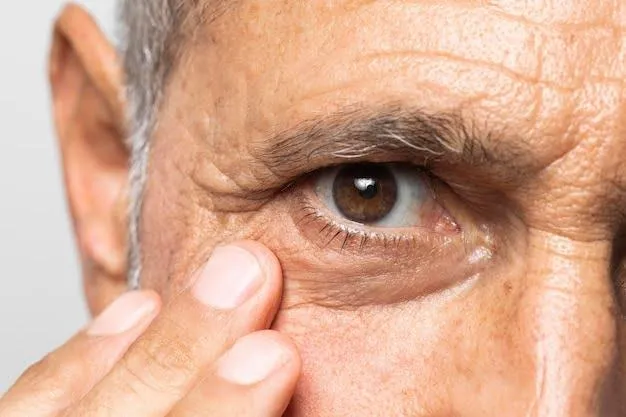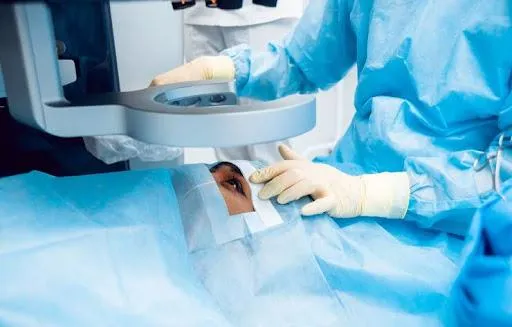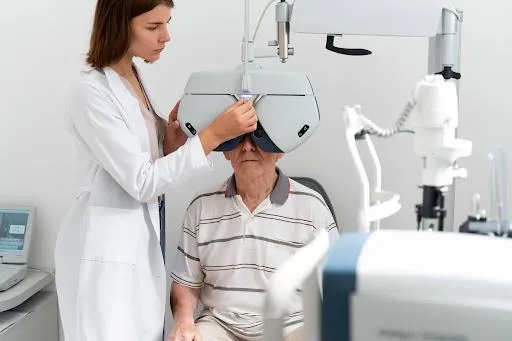Eye Health
Cataracts and Early Warning Signs
FSDAVCFEBFEVSDDVFSD
FSDAVCFEBFEVSDDVFSD
FSDAVCFEBFEVSDDVFSD
What Cataracts Really Are
Cataracts are a common age-related eye condition where the eye’s natural lens becomes cloudy, leading to gradual vision loss. Often referred to as an “unseen epidemic,” cataracts usually develop slowly, making early symptoms easy to overlook. While more common in adults over 60, cataracts can also appear earlier due to genetics, health conditions, or prolonged sun exposure. The clouding of the lens blocks light from passing clearly through to the retina, causing visual disturbances.
Since early-stage cataracts may not cause pain or immediate dramatic vision changes, many dismiss the signs as part of normal aging. This delay in diagnosis can interfere with daily activities like reading or driving.
Cataracts are a common age-related eye condition where the eye’s natural lens becomes cloudy, leading to gradual vision loss. Often referred to as an “unseen epidemic,” cataracts usually develop slowly, making early symptoms easy to overlook. While more common in adults over 60, cataracts can also appear earlier due to genetics, health conditions, or prolonged sun exposure. The clouding of the lens blocks light from passing clearly through to the retina, causing visual disturbances.

Since early-stage cataracts may not cause pain or immediate dramatic vision changes, many dismiss the signs as part of normal aging. This delay in diagnosis can interfere with daily activities like reading or driving.

How to Recognize Symptoms of Cataracts
Cataracts often begin with subtle symptoms that may go unnoticed. Early indicators include difficulty seeing at night, increased sensitivity to light, halos around bright lights, and colors appearing faded or yellowed. Some individuals may find they need brighter lighting for reading or other close-up tasks, or notice that their glasses no longer improve their vision as effectively as before.
If you find yourself squinting more often, struggling to read signs, or having trouble recognizing faces in dim lighting, these could be signs of developing cataracts. It’s important not to dismiss these symptoms as simply “getting older.” Cataracts can gradually affect your quality of life, and early detection plays a key role in preserving your sight.
Noticing these changes and taking action early can protect your long-term vision. Regular eye exams are essential in identifying these early signs. A comprehensive eye exam allows an optometrist to assess the clarity of your eye’s natural lens and detect cataracts in their earliest stages. With timely diagnosis and proper management, cataract-related vision loss can often be corrected or slowed, helping you maintain clear, healthy vision well into the future.
Early Signs and Symptoms of Cataracts

Optometrists use advanced diagnostic tools to identify cataracts during routine eye exams. One key method is the slit lamp exam, which allows the doctor to examine the structures of the eye under high magnification. This tool makes it possible to detect even slight lens cloudiness, a primary sign of cataracts. Early identification through these methods is crucial for effective monitoring and timely treatment.
At Kleinwood Vision, cataract testing is comprehensive and includes detailed lens evaluation, visual acuity testing, and lens opacity grading.

These procedures provide valuable information about how cataracts are developing and affecting vision. Tracking this progression over time helps optometrists determine the best course of action. When cataracts begin to interfere with daily life, this testing also informs decisions about surgical referrals, ensuring patients receive the care needed to maintain clear, functional vision.
Comprehensive testing is essential to ensure that any changes in your vision are not overlooked. Regular evaluations at Kleinwood Vision allow doctors to compare current results with previous exams, enabling precise tracking of lens changes caused by cataracts. This consistent monitoring helps determine when cataracts begin to significantly affect vision and daily activities, guiding timely decisions about treatment options.
Kleinwood Vision’s care goes beyond diagnosis and treatment by offering thorough monitoring after cataract surgery. They provide pre-operative counseling to prepare patients for the procedure and post-operative checkups to ensure the implanted lens is working properly. These follow-ups also help track the healing process and detect any complications early. This comprehensive approach ensures patients receive long-term support for their eye health, promoting optimal recovery and maintaining clear vision well after surgery. Through these steps, Kleinwood Vision demonstrates a strong commitment to patient care and vision preservation.
Tips for Prevention and Eye Protection
Although cataracts can’t always be prevented, certain lifestyle choices may help delay their development. One effective habit is wearing sunglasses that offer UV protection for the eyes. Prolonged exposure to ultraviolet light has been linked to faster cataract progression, so protecting your eyes from UV rays is essential. Additionally, managing blood sugar levels and avoiding smoking are important steps that contribute to maintaining clearer vision and overall eye health.
Nutrition also plays a vital role in supporting lens health. A diet rich in antioxidants like vitamin C, vitamin E, and lutein helps protect the eyes from damage that can lead to cataracts. Staying hydrated further supports eye function and health. By adopting these preventive and protective tips, individuals can reduce their risk and potentially delay the onset or progression of cataracts, preserving their vision for longer.
Treatment Options and Eye Doctor’s Role
Treatment for cataracts depends on the stage and severity of the condition. Early cataracts can often be managed with prescription updates or brighter lighting to improve vision. However, as the cloudiness worsens, surgery becomes necessary.
Cataract surgery involves removing the cloudy natural lens and replacing it with an artificial lens, restoring clear vision. Your eye doctor for cataracts plays a central role both before and after surgery. They help determine when surgery is needed, make the referral, and co-manage care to ensure a comfortable experience.
Treatment for cataracts depends on the stage and severity of the condition. Early cataracts can often be managed with prescription updates or brighter lighting to improve vision. However, as the cloudiness worsens, surgery becomes necessary.
Cataract surgery involves removing the cloudy natural lens and replacing it with an artificial lens, restoring clear vision. Your eye doctor for cataracts plays a central role both before and after surgery. They help determine when surgery is needed, make the referral, and co-manage care to ensure a comfortable experience.


At Kleinwood Vision, you’ll receive continuity of care from detection to recovery. Their experience in co-managing cataract care means you’re supported at every step, with regular check-ins to assess how the condition progresses and decide what steps to take next.
When to Schedule an Eye Exam
Don’t wait for vision problems to become disruptive. Adults over 40 should prioritize annual eye exams, especially if they experience any of the early symptoms of cataracts. Vision changes like needing more light to read, blurred vision while driving at night, or seeing halos around lights should never be ignored. These subtle signs can indicate the early stages of cataracts or other eye conditions that, if detected early, can be managed more effectively. Ignoring these symptoms may lead to worsening vision and greater difficulty with daily activities.
Routine eye exams are essential for catching cataracts early, when changes in prescription or lifestyle adjustments might still help manage the symptoms. Early detection through a comprehensive eye exam allows your eye doctor to monitor lens cloudiness and make informed decisions about your care. If you notice any differences in your vision, booking an exam will provide clarity on your condition and allow you to plan the next steps with an expert. This proactive approach supports better long-term eye health and can delay the need for surgical intervention.
In many cases, early diagnosis means you can delay cataract surgery by managing symptoms with support from your optometrist. Regular monitoring ensures that changes in your vision are tracked and addressed promptly. By staying on top of your eye health with annual exams and professional guidance, you can maintain clearer vision and improve your quality of life. Early intervention and ongoing care are key to preserving eyesight and preventing cataracts from becoming a significant obstacle.
Long-Term Support for Your Vision
Cataracts may be a natural part of aging, but they don’t have to control your vision. With early detection, preventive habits, and expert guidance, patients can maintain a high quality of life and protect their eyesight. Recognizing symptoms early allows for timely management, helping to slow cataract progression and reduce vision loss.
The team at Kleinwood Vision is dedicated to guiding you through every step of cataract care with personalized attention and advanced diagnostic tools.

Cataracts may be a natural part of aging, but they don’t have to control your vision. With early detection, preventive habits, and expert guidance, patients can maintain a high quality of life and protect their eyesight. Recognizing symptoms early allows for timely management, helping to slow cataract progression and reduce vision loss.
The team at Kleinwood Vision is dedicated to guiding you through every step of cataract care with personalized attention and advanced diagnostic tools.
If you’re frequently on the move or prefer not to wear glasses, multifocal contacts offer more freedom and convenience. They provide clear vision at multiple distances without the need for switching glasses, making them ideal for active lifestyles.
From your initial eye exam to post-surgical monitoring, their focus is on preserving your sight and ensuring your comfort throughout the process.
If you’ve noticed changes in your vision or are due for your next annual exam, book an appointment today. Protecting your vision starts with staying informed and proactive. Taking these steps empowers you to maintain clearer vision and enjoy a better quality of life long-term.
Final Takeaway and Action Step
Cataracts don’t develop overnight, but their effects can gradually sneak up on you, often going unnoticed until vision becomes impaired. Early symptoms may be subtle, making it important to recognize the signs and maintain regular eye checkups. Consistent exams are crucial for preserving long-term vision health by detecting cataracts early when they are easier to manage and treat. Being proactive allows for timely intervention that can slow progression and improve outcomes.
Whether you’re experiencing symptoms or want to stay ahead of potential vision changes, scheduling your next eye exam is essential. Kleinwood Vision provides compassionate care and professional expertise to guide you through every stage of cataract care. Their team is dedicated to protecting your vision and ensuring your comfort throughout the process. Taking these steps empowers you to take control of your eye health and maintain clear, healthy vision for years to come.

Contact Info
Hours of Operation
Mon - Fri | 9:00 AM - 5:00 PM
Sat - Sun | Closed
Holiday Hours: We are closed for the following holidays: New Years Day, Memorial Day, Independence Day, Labor Day, Thanksgiving Day, Christmas Day
© 2025 Kleinwood Vision. All rights Reserved.


